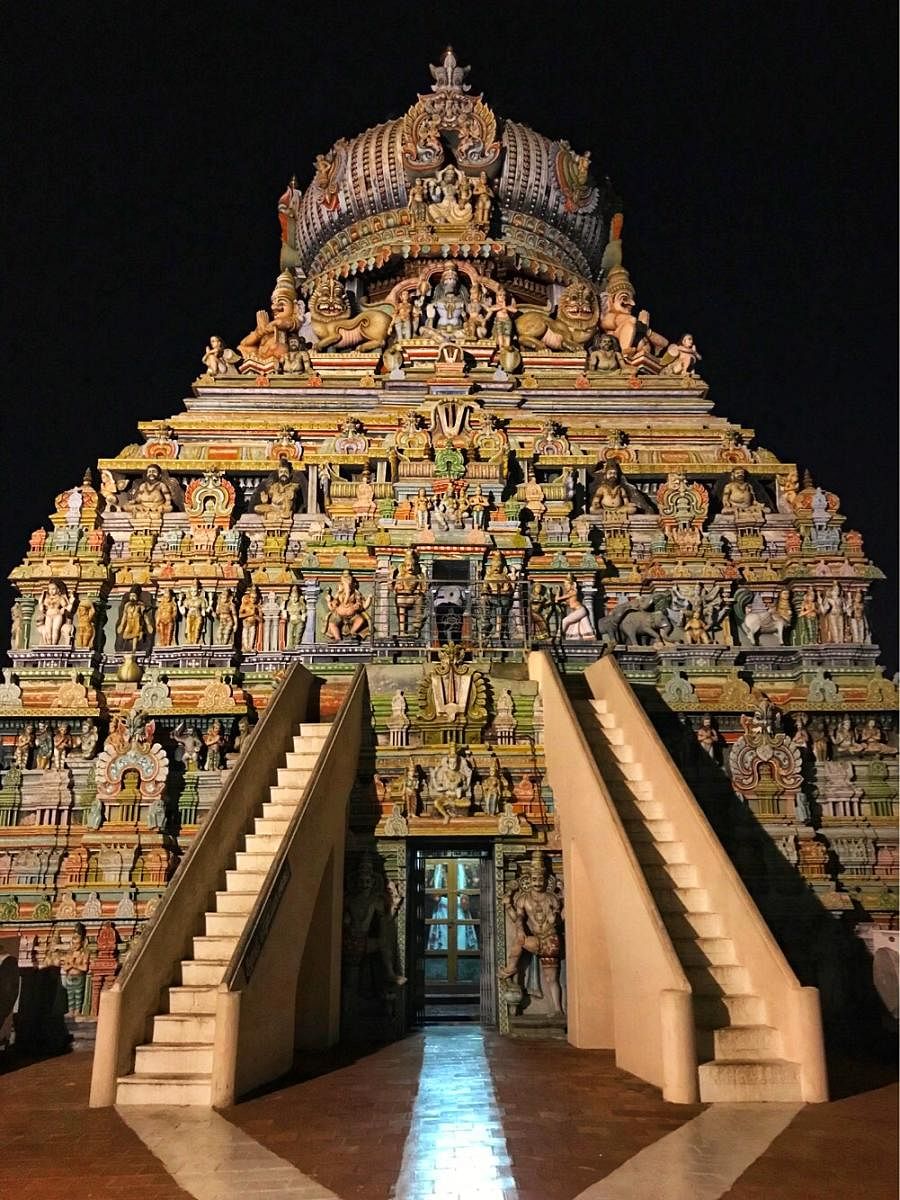Madurai: A temple town & its tales of glory

It is strange yet comforting to note the way Madurai effortlessly blends the magic of tradition with modernity. It does not tiptoe the fine line between the two worlds but brings the contradictions together, engulfing all in its synergy. Thoonga Nagaram — the city that never sleeps; the city which is one of the oldest in the world and traded with ancient Rome — conquers you the moment you lay your eyes on the rhythmic hustle-bustle of its streets. The majesty of its temples, lingering hint of jasmine in the air, clink and shine of its brassware, appetising aromas, and flourishing markets seem to waste no moment in enchanting you.
The pièce de résistance
The state of awe quickly changes into fixation as the lanes and bylanes give way to the Meenakshi Amman temple. As you stand stupefied, unable to take your gaze off the burst of colours — hundreds and thousands of gods, goddesses, demons, and saints telling their own stories on its gigantic gopurams, you suddenly feel you have become a part of a live 3D epic. The ensuing sense of being lost in its maze-like complex inside further adds to the amazement in this abode of warrior goddess Meenakshi, going back to 2,000 years in a city believed to be inhabited since no less than the third century BC. Be it the 1,000-pillar hall, painted ceilings, vibrant walls, or dwarfing pillars, the place has magic written all over it. The destruction and plundering that it saw in the 14th century at the hands of Malik Kafur, the general of Alauddin Khilji and the subsequent resurrection and expansion by the Vijayanagar Empire rulers and Nayak kings add a phoenix-like allure to it too.
Only worthy shall survive
The Golden Lotus tank and the tales of its divine powers leave an already astounded you even more amazed. For, it is the one which not only saw generations of talent come together and brainstorm on its sides but also adjudged the compositions of great poets and scholars. The legend has it that only the worthy manuscripts would pass its test and float to the surface, the rest drowned. The energy and the amusement coursing through the self surprisingly get channelised into instantaneous calm and composure upon entering the inner sanctum. It is customary to pay your obeisance to goddess Meenakshi, a form of Goddess Parvati, before her consort Sundareshwarar or Shiva. The latter, however, becomes the centre of attraction every night. The place turns mystical as Lord Shiva’s icon, engulfed in aromatic incense clouds, heads to Meenakshi’s shrine in a procession to spend the night.
Temple town tour
In the shadows of the Meenakshi Temple, Koodal Azaghar temple is a unique three-level construction dedicated to Lord Vishnu. While the deity is in sitting, standing, and reclining positions respectively at each level, its walls are a peep into the arts and poetry that made Madurai an important seat of the Sangam era. The tour of this temple town would be incomplete without paying due obeisance to the favourite Tamil son — Karthikeya or Murugan. On the outskirts of Madurai, Thirupparamkunram Murugan temple is where Lord Shiva’s son killed the demon Surapadman and married Indra’s daughter Deivayanai. Located at the foot of the Yanaimalai hills, Narasingam Yoga Narasimha Perumal Temple’s rock-carved statue of Narasimha inside a cave is a sight to behold. The outer precincts of the temple house the idol of Yoga Narasimha, the ferocious version.
Lost splendour
A classic mix of Dravidian, Rajput and Islamic architectures, Thirumalai Nayak Palace might be only a quarter of its 17th-century self, yet its pillared corridors and stunning arches give a fine peek into the grandeur of yore. The imagination doesn’t need to make much effort to picture the proceedings that would have taken place under those brightly-painted ceilings, the light through the coloured glasses adding to the effect. The building that stands today was the main palace in which the king lived. It was his own blood, however, that proved pivotal in bringing a large share of doom upon it. King Thirumalai Nayak’s grandson dismantled a large part of the palace and removed precious jewels and woodcarvings to build for himself an equal if not a bigger dream in Tiruchirappalli. It was, however, not meant to be.
Madurai’s allure
Madurai is said to be originally a forest known as Kadambavanam, where Indra worshipped a swayambhu (self-created Lingam). The then king, Kulasekara Pandya, cleared the forest and built a temple around the Lingam. A city was soon planned around it and the day it was to be named, Lord Shiva appeared and drops of nectar from his hair fell there. Hence, Madurai, a derivative of madhura (sweet/nectar).
Wednesday is considered auspicious for it is the day goddess Meeankshi got married. The state emporium, hence, offers 50% discount on sarees every
Wednesday morning.
It’s also a food lover’s paradise what with the fluffiest and softest idlis and the crispy ghee podi dosa being the best way to start the day Gorge on varieties of murukkus, idiyappams and curries. Then there’s Amma Mess at Thallakulam that’s known for its chicken dosa, prawn biryani and mutton kola (fried mutton balls) among others.
Deccan Herald is on WhatsApp Channels| Join now for Breaking News & Editor's Picks